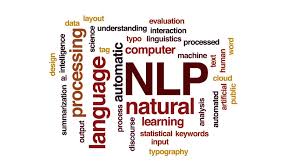
Regular expressions & word tokenization
2019, Mar 18
- 정규식표현에 대하여 알아보도록 하겠습니다.
- 실습 예제로 정규식 표현은 다음과 같이 사용합니다.
import re
re.findall(PATTERN, string)
- 위의 명령어에서
re는regular expression패키지를 뜻합니다. re.findall(PATTERN, string)의 첫번째 파라미터인pattern에는 정규식문법이 들어가고 정규식문법을 통하여 원하는 문자를 검출해냅니다.
my_string = "Let's write RegEx!"
>> re.findall(r"\w+", my_string)
['Let', 's', 'write', 'RegEx']
- 위 코드에서 사용된
r"\w+"에서\w는 문자를 뜻하고+는 하나 또는 그 이상 연결된을 뜻합니다. 접두사인r은 정규식표현임을 뜻합니다.- 따라서
r"\w+"는 하나 이상의 문자로 연결된 문자열을 뜻합니다.
- 따라서
정규식 표현 예제
my_string이 다음과 같은 문자열이라고 가정해 보겠습니다.- “Let’s write RegEx! Won’t that be fun? I sure think so. Can you find 4 sentences? Or perhaps, all 19 words?”
# Import the regex module
import re
# Write a pattern to match sentence endings: sentence_endings
sentence_endings = r"[.,?,!]"
# Split my_string on sentence endings and print the result
>> print(re.split(sentence_endings, my_string))
["Let's write RegEx", " Won't that be fun", ' I sure think so', ' Can you find 4 sentences', ' Or perhaps', ' all 19 words', '']
# Find all capitalized words in my_string and print the result
capitalized_words = r"[A-Z]\w+"
>> print(re.findall(capitalized_words, my_string))
['Let', 'RegEx', 'Won', 'Can', 'Or']
# Split my_string on spaces and print the result
spaces = r"\s+"
>> print(re.split(spaces, my_string))
["Let's", 'write', 'RegEx!', "Won't", 'that', 'be', 'fun?', 'I', 'sure', 'think', 'so.', 'Can', 'you', 'find', '4', 'sentences?', 'Or', 'perhaps,', 'all', '19', 'words?']
# Find all digits in my_string and print the result
digits = r"\d+"
>> print(re.findall(digits, my_string))
['4', '19']
- 정규식표현 관련 대표적인 함수
re.findall(패턴, 문자열): 정규식 표현에 부합하는 모든 문자열을 찾습니다.-
re.split(패턴, 문자열): 정규식 표현에 부합하는 문자를 기준으로 문자열을 자릅니다. - 정규식을 사용할 때, 대표적으로 사용하는 패턴은 다음고 같습니다.
"\w": 알파벳 + 숫자"\d": 숫자"\s": 공백문자"+": 하나 이상"[]": 패턴을 직접적으로 명시할 때